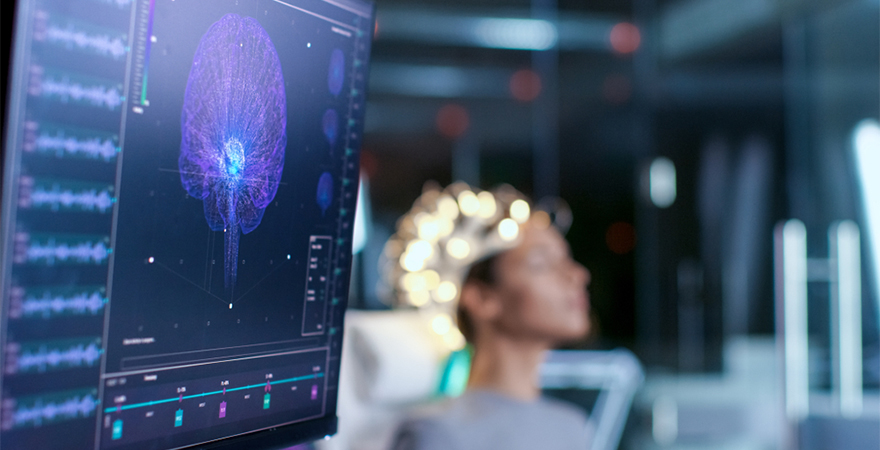Synergex Med
February 14, 2024
Demystifying Migraine: Exploring the Origins and Effects of this Headache Phenomenon
Migraine, a prevalent neurological disorder, is characterised by a distinct type of headache accompanied by a myriad of additional symptoms, including nausea, vomiting, and heightened sensitivity to light and sound. The throbbing pain typically affects one side of the head, often to such an extent that it significantly disrupts daily activities and overall quality of life.
Therefore, it is imperative to delve further into, comprehend thoroughly, and foresee the implications of this subject matter.
Let´s see our topics for the blog!
- Inside Migraine: A Comprehensive Guide to its Different Types
- Exploring Factors that Spark Headache Episodes
- Exploring Neurological Treatments for Headache
- Mastering Headache Management: Effective Techniques to Lower Headache Levels
- Optimising Relief: Understanding and Embracing the Benefits of Targeted Headache Treatment
This condition, which can persist anywhere from several hours to a few days, may herald its arrival with an “aura“—transient neurological symptoms serving as precursors to the impending headache. These symptoms may encompass blurred vision, visual disturbances like flashing lights or zigzag lines, and even speech difficulties.

From a scientific standpoint, headache is associated with alterations in brain activity and neurotransmitter function, particularly serotonin. These changes can be triggered by various factors, including stress, hormonal fluctuations, dietary elements, sleep disturbances, and environmental influences.
Understanding the pathophysiology of headache has paved the way for diverse therapeutic interventions aimed at managing this condition. These encompass both pharmacological and non-pharmacological modalities, spanning from headache-specific analgesics to preventive treatments, lifestyle adjustments, and complementary therapies.
Inside Migraine: A Comprehensive Guide to its Different Types
- Tension headaches: Involve constant pressure or tightness around the head, causing mild to moderate pain, without other symptoms like nausea or sensitivity to light and sound.
- Migraine headaches: Characterised by intense, throbbing pain, often on one side of the head, accompanied by symptoms such as nausea, vomiting, and sensitivity to light and sound. May be preceded by an aura, including visual disturbances or tingling sensations.
- Cluster headaches: Intensely painful headaches occurring in clusters or patterns, usually felt around one eye or temple. Can lead to redness or tearing of the eye, stuffy or runny nose, and facial sweating.
- Sinus headaches: Result from sinus inflammation or infection, causing pain and pressure in the forehead, cheeks, and around the eyes. Often accompanied by sinus-related symptoms like congestion and discharge.
- Hormone headaches: Occur due to hormonal fluctuations during menstruation, pregnancy, or menopause, presenting as migraines or tension-type headaches and often linked to changes in estrogen levels.
- Rebound headaches: Result from overuse or withdrawal of headache medication, happening when the body becomes accustomed to the medication and needs more for relief. Can stem from both over-the-counter and prescription medications.
- Exertional headaches: Triggered by physical activity or exertion, varying from mild to severe and lasting from minutes to hours, often occurring during or after strenuous exercise.
- Weather-related headaches: Triggered by changes in weather or barometric pressure, occurring with fluctuations in temperature, humidity, or altitude. May accompany other weather-related symptoms like sinus congestion or allergies.
- Caffeine headaches: Result from overconsumption or withdrawal of caffeine, arising when the body becomes dependent on caffeine for normal functioning. Typically accompanied by fatigue, irritability, and difficulty concentrating.
Exploring Factors that Spark Headache Episodes
Headache is attributed to abnormal brain activity triggered by various factors. While the exact sequence of events remains incompletely understood, researchers believe that factors such as changes in cerebral blood flow, neurotransmitter release, and nervous system sensitivity play crucial roles in migraine development.
Additionally, genetic, hormonal, environmental, and lifestyle factors may also contribute to migraine predisposition and triggering. This complex interplay of factors may influence migraine onset and intensity in susceptible individuals.

Exploring Neurological Treatments for Headache
Neurological treatments for headaches encompass a diverse array of strategies tailored to mitigate the impact of this debilitating condition. Here are some of the most effective options available, along with their benefits:
- Preventive Medications: These pharmaceutical interventions aim to be taken regularly to reduce the frequency and severity of headache episodes. Options include beta-blockers, tricyclic antidepressants, anticonvulsants, and calcitonin gene-related peptide (CGRP) antagonists. By incorporating these medications into your routine, you can proactively manage your headaches and improve your quality of life.
- Acute Pain Relief Medications: When experiencing a headache attack, immediate relief is crucial. Triptans, a widely prescribed class of drugs, excel in alleviating headache-related pain and symptoms. Over-the-counter pain relievers like ibuprofen or acetaminophen can also offer respite, providing fast relief when you need it most.
- Botulinum Toxin Type A (Botox) Injections: For individuals grappling with chronic headaches, Botox injections have emerged as a game-changing therapeutic option. Strategically administered at various points across the head and neck, these injections work to stave off the onset of headache attacks, providing long-lasting relief and improving overall quality of life.
- Nerve Stimulation Therapy: Harnessing the power of advanced medical devices, nerve stimulation therapy delivers targeted electrical stimulation to specific nerves implicated in headache pathogenesis. By modulating neural activity, this innovative approach holds promise in preventing migraine attacks, offering a non-invasive and effective alternative for headache management.
- Complementary Therapies: In addition to conventional medical treatments, complementary therapies offer an adjunctive avenue for relief. Practices such as acupuncture, cognitive behavioral therapy, biofeedback, physiotherapy, and chiropractic care have garnered acclaim for their ability to complement traditional headache management strategies. Integrating these therapies into your treatment plan can enhance overall effectiveness and promote holistic well-being.
Mastering Headache Management: Effective Techniques to Lower Headache Levels
- Healthy Lifestyle: Consistent sleep patterns, balanced nutrition, and relaxation techniques aid in lessening the frequency and severity of migraine episodes.
- Trigger Identification: Recognising and avoiding known triggers like specific foods, beverages, odors, or stressors can help prevent migraine attacks.
- Pharmacological Treatment: Prescription of preventive medications, targeted analgesics, and preventive therapies tailored to the severity and frequency of headache episodes.
- Preventive Medications: Beta-blockers, tricyclic antidepressants, and anticonvulsants may decrease attack frequency in severe cases.
- Specific Analgesics: Triptans offer rapid and effective relief from pain and associated symptoms..
- Integrative Approach: Complementary therapies such as acupuncture, cognitive behavioral therapy, and biofeedback complement traditional treatment strategies.

Optimising Relief: Understanding and Embracing the Benefits of Targeted Headache Treatment
- Reduced Attack Frequency and Severity: Targeted therapies alleviate migraine or headache burden by decreasing both attack frequency and intensity.
- Enhanced Quality of Life: By mitigating headache impact, these therapies substantially enhance sufferers’ overall quality of life.
- Efficacy of Preventive Medications: Certain drugs effectively reduce attack frequency in severe or recurrent cases.
- Relief During Attacks: Headache-specific analgesics provide swift and effective pain relief.
- Complementary Therapies: Acupuncture, cognitive behavioral therapy, and biofeedback may enhance outcomes in some patients.
- Medical Consultation Importance:Consulting a physician ensures accurate diagnosis and personalised treatment plans, incorporating a holistic approach to headache management.
After delving into this guide on headache management, you’ve uncovered the groundbreaking strides in addressing chronic pain and neurological conditions. From unraveling the mechanisms behind headache management to exploring diverse strategies and technologies, you’ve grasped a comprehensive understanding of this pioneering approach.
Here at Synergyex Med, our commitment lies in fostering the holistic health of our patients. We’re devoted to delivering cutting-edge, customised treatment solutions designed to suit each individual’s unique requirements. We place great emphasis on empowering our patients through education and information, enabling them to make well-informed decisions about their health and wellbeing.


